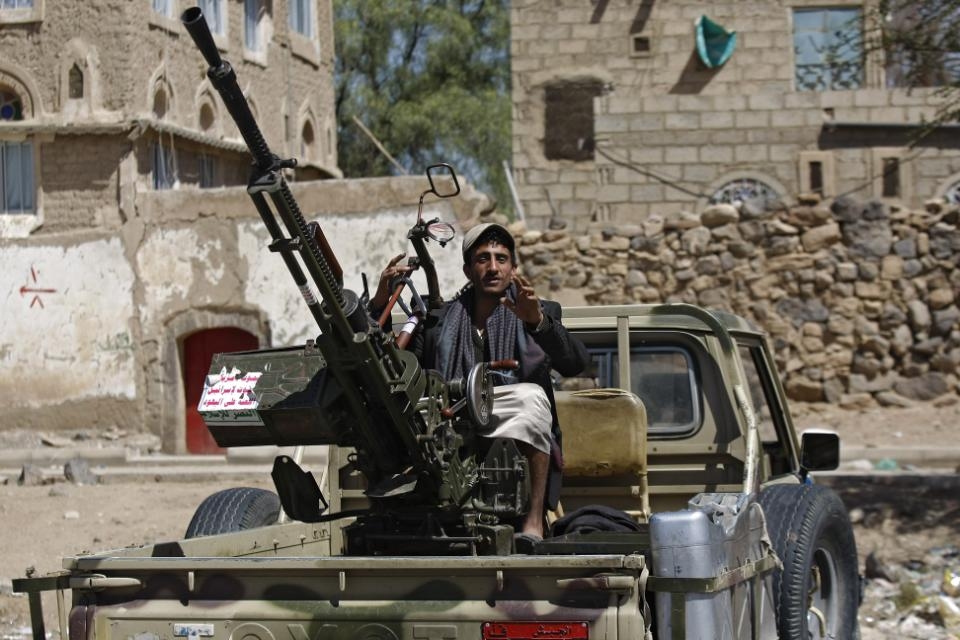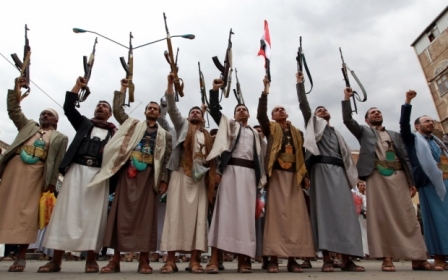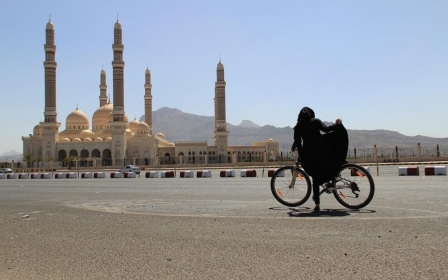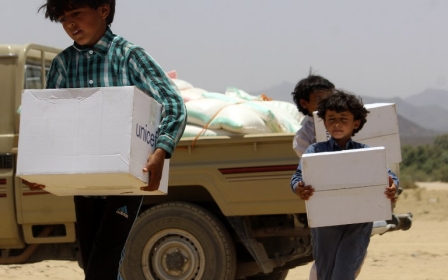Yemen: Houthi anti-aircraft fire killing dozens of civilians

More than the window panes rattling, explosions shaking the floor, and mortars booming from the hills above, residents of Yemen’s capital Sanaa dread the bursts of what sounds like machine-gun fire rattling through the city; it is the noise of anti-aircraft guns used by Houthi fighters almost daily to fend off Saudi fighter jets bombing their positions across the country.
Hundreds of anti-aircraft munitions, often mounted on vehicles and built to fire shells rapidly at high angles, were seized by the Houthis - along with millions of dollars of US-provided military equipment - last year when they stormed Sanaa and toppled the government of President Abd Rabu Mansour Hadi.
The artillery, which the Houthis say is meant to protect residents from the airstrikes, is proving deadly for civilians.
Dozens have been killed by fragments of the exploding shells from the guns, and hundreds have been injured, according to Hadi Hamdeen, a surgeon at al-Thawra, the largest hospital in Sanaa.
"More than half of the injured people in the hospital are caused by anti-aircraft," Hamdeen told Middle East Eye. In one case last month, Hamdeen said, a baker in his 30s, was standing in front of his store in downtown Sanaa when he was struck in the head by shrapnel from an anti-aircraft shell. He was pronounced dead on arrival at the hospital.
Ali Abdolwadood, a colleague of the baker, told Middle East Eye that his death has spread fear in the neighbourhood. "After Najeeb [the baker] was killed, most of us became wary of leaving the bakery or our houses whenever the anti-aircraft gunfire was heard, we didn’t want to be hit like Najeeb," he said.
In a report published last week, Amnesty International said that anti-aircraft munitions shot by the Houthi armed group into densely populated areas were the leading cause of casualties in the capital.
Also known as Ansar Allah, or “supporters of God”, the Iran-allied group say they have yet to down a warplane in Sanaa, but that anti-aircraft munitions have prevented the warplanes from flying low over the city and doing more damage.
"Ansar Allah are using the anti-aircraft to prevent the warplanes from descending more than 3.5km where they can hit specific targets," said Hussein Al-Boukhaiti, a Houthi activist. “The Houthis are using a kind of weapon that only explodes in the air, and this is much safer for people. If the Houthis did not use the weapons, Sanaa would be rained down on by bombs, people would not dare leave their homes."
‘Hiding in their homes’
Khairi Hassan, an ex-taxi driver in his 40s, gave up his job driving taxis in April when a bullet fell from the sky last month and pierced the bonnet of his car. "It was a message from Allah to stay at home during the airstrikes," he said. The taxi was the only source of income for Hassan, who lives with his wife and four daughters in a small apartment on the edge of Sanaa.
An interior ministry official told MEE that residents should stay at home during the strikes. "If someone is in the street and hears anti-aircraft, he should enter the nearest supermarket, restaurant, or any building to escape from the falling bullets," Hizam said. “People might waste hours at home but it could save their lives.”
Many residents in Sanaa go up to the rooftops of buildings to take photos or to see the warplanes and the targeted areas, and this could pose a threat to their lives. Hizam attributed these acts to the residents' lack of awareness.
Middle East Eye propose une couverture et une analyse indépendantes et incomparables du Moyen-Orient, de l’Afrique du Nord et d’autres régions du monde. Pour en savoir plus sur la reprise de ce contenu et les frais qui s’appliquent, veuillez remplir ce formulaire [en anglais]. Pour en savoir plus sur MEE, cliquez ici [en anglais].




